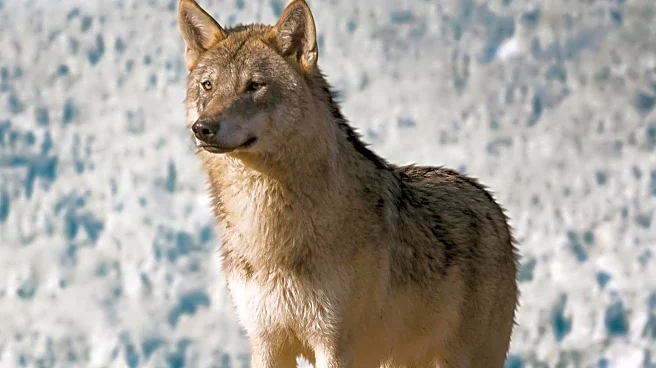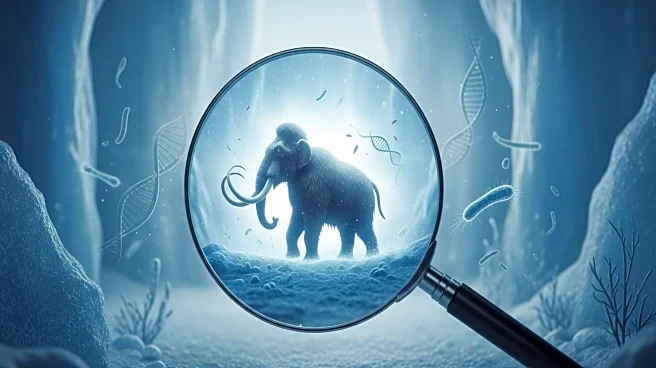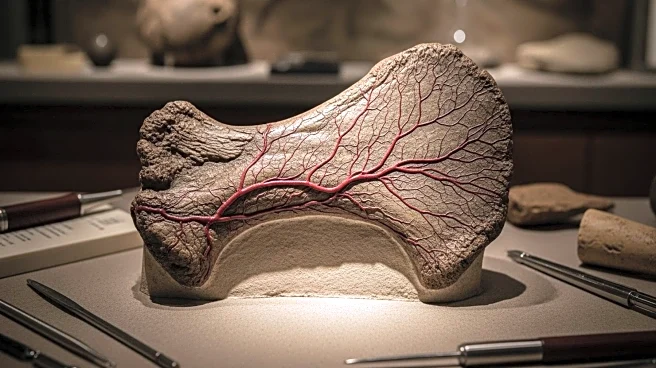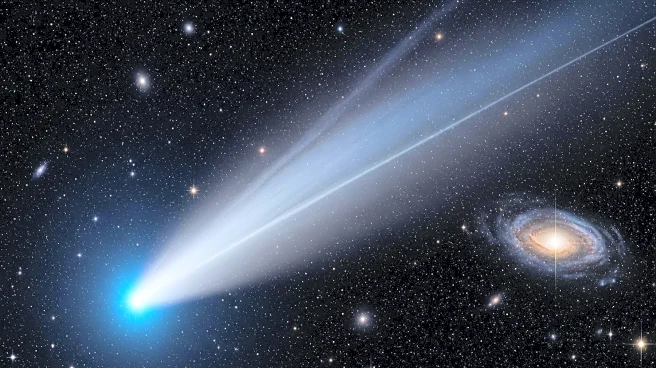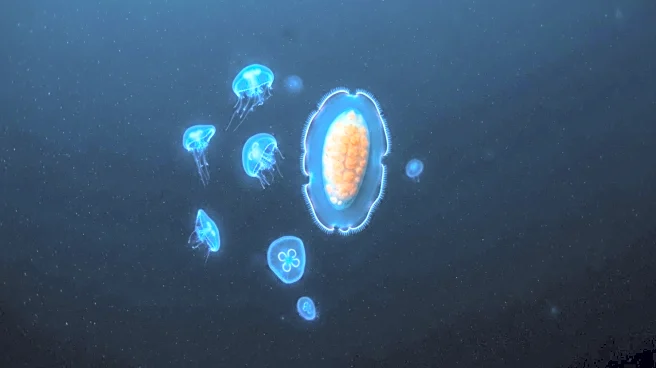What's Happening?
A remarkably preserved Ice Age wolf, estimated to be 44,000 years old, was discovered in Siberia's frozen ground. The wolf's body, found in 2021, retained its skin, fur, and internal organs, providing a rare opportunity for scientific study. Researchers in Yakutsk conducted a necropsy on the specimen, aiming to reconstruct its diet and inspect surviving microbiota. The discovery marks the first intact Ice Age predator found, offering insights into the ecosystems and life history of ancient carnivores.
Why It's Important?
The discovery of a well-preserved Ice Age wolf provides valuable data for understanding the biology and ecology of ancient predators. It offers a unique opportunity to study the diet, health, and genetic lineage of Ice Age wolves, contributing to knowledge about their role in prehistoric ecosystems. The preservation of soft tissues and organs allows for detailed analysis of ancient microbiota, potentially revealing information about past diseases and environmental conditions. This find enriches the scientific understanding of Ice Age fauna and their interactions within their habitats.
Beyond the Headlines
The preservation of the wolf's body highlights the role of permafrost in halting decay and maintaining biological integrity over millennia. The study of ancient pathogens in the wolf's gut may provide insights into the biosecurity risks posed by thawing permafrost, as viable microbes could resurface. The genetic analysis of the wolf could refine the understanding of wolf evolution and migration patterns, offering clues about the ancestry of modern wolves and dogs. The discovery underscores the importance of preserving permafrost regions as they hold critical information about Earth's past.
